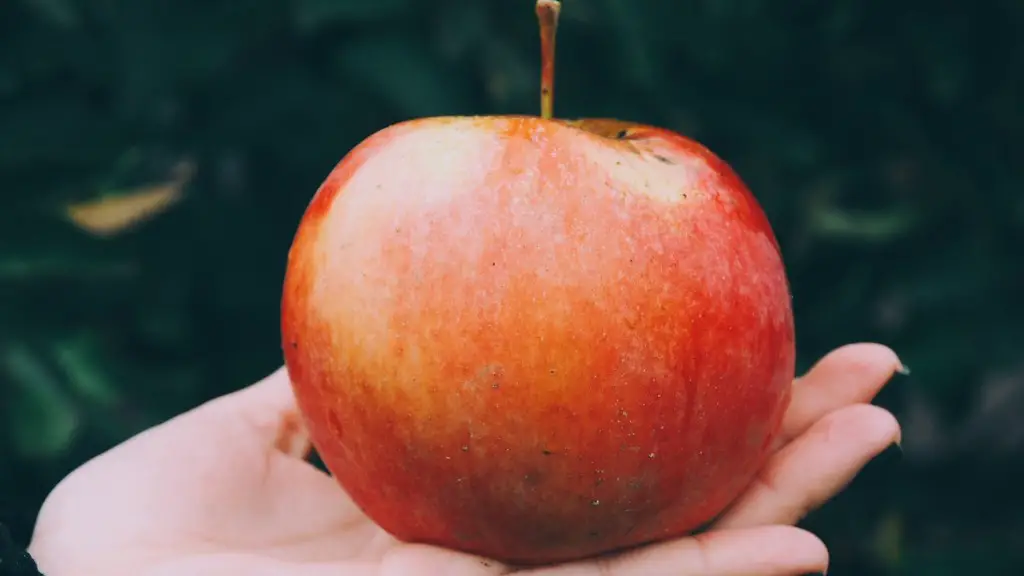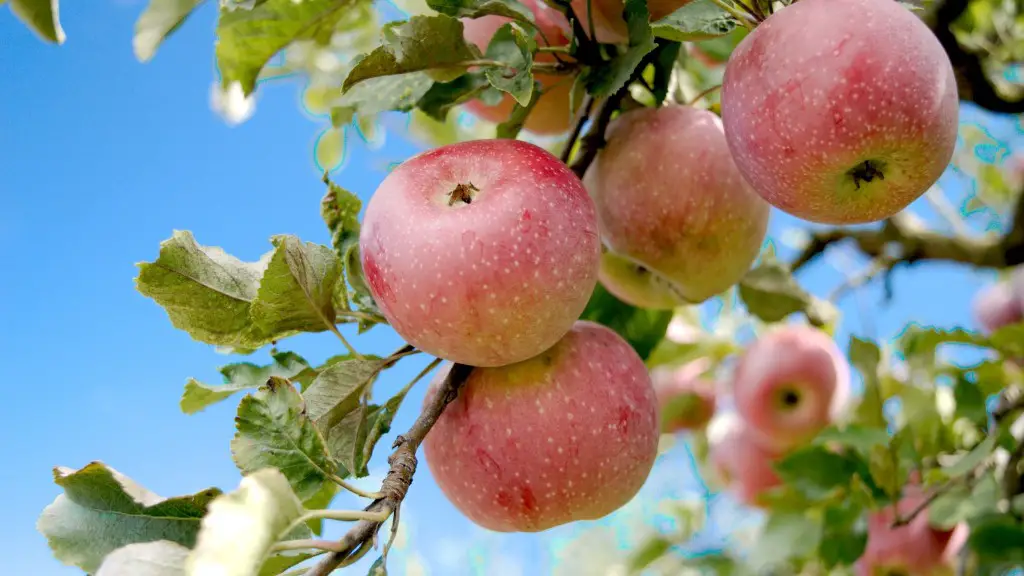Identifying an apple tree can be a difficult task. However, it is possible by paying close attention to the tree’s characteristics and comparing them to known apple tree species. First, take note of the tree’s size. Apple trees are generally not taller than 25 feet in height, and the trunk diameter can range from medium to large. Additionally, look for the growth habit of the tree. Apple trees tend to prefer to spread wide, having multiple branching and a symmetrical shape. Second, look for the bark of the tree. While it varies in species and age, the presence of a light-grayish bark, that has a slightly fissured texture, is a common trait amongst apple trees. Third, take notice of the leaves of the tree. This species of tree has broad oval-shaped leaves, with distinct serrations along the edges. The leaves have a slightly glossy and shimmering look to them. In addition to that, the underside of the leaves are generally paler in color compared to the top. Fourth, take note of the flowers present on the tree. Apple trees generally produce white, pink or red flowers depending on the species. The flowers consist of five petals and are generally 1.5-2 inches in diameter. Fifth, observe the apple fruit. These fruits range in color depending on the species and the ripeness. Most notably, the apples grown on this species of tree have a distinct bell-shaped base and a bisected top. Finally, some apple tree species have a distinctive smell, so pay close attention for any strong fragrances in the vicinity.
Characteristics of Apple Trees
The characteristics of an apple tree depend largely on the species of the tree. While some general trends are present, there can be quite a bit of variation between different species. For instance, branching and shape can vary between species. Apple trees may have vertical, ascending or slightly curved-shaped branches. Additionally, the characteristics of the leaves can also differ. While most apple trees have ovular and glossy leaves, certain species may produce silvery-green leaves that have sharper edges. In regards to the bark, some more upright species tend to have darker bark that features a thicker texture and large irregular fissures.
Red Delicious Apple Trees
Red Delicious apples are a type of apple tree that is known for its signature, elongated-shape and mellow sweetness. While it is one of the most widely known apple varieties, it is not always easy to identify. The tree’s fruits can be easily identified, as they are of a bright red color and have a slightly flattened, bell-shape. Additionally, the leaves tend to be wider, slightly longer and more ramified compared to other apple tree species. The bark of a Red Delicious apple tree is typically lighter in color and has a relatively smoother texture. Lastly, the red delicious apples also emit a faint and pleasant scent, which further reveals their identity.
Granny Smith Apple Trees
Granny Smith apples are known for their vivid green hue and tartness. In regards to the tree, it is generally more upright and less broad than some of the other species. As a result, the leaves may be more narrow and pointed than other apple tree species. Additionally, the bark of this tree usually has a darker and firm texture. As for the fruits, they have an almost disk-shaped form, with a bright green color. The characteristic tart flavor of the Granny Smith apples can also be a helpful distinguishing feature.
Fruitless Apple Trees
Fruitless apple trees are a type of apple tree that is grown mainly for its aesthetic appeal. This species is easily distinguished by its lack of fruit. Additionally, its leaves tend to be more slim and shallow in comparison to other species. The trunk of the tree is also typically thinner and the bark is smoother than some of the other species. Fruitless apple trees are most often used as ornamental plants, although certain varieties may produce an extremely small amount of fruit come harvest season.
Wild Apple Trees
Wild apple trees, also known as crabapple trees, thrive in forests and are mainly identified by their smaller fruit. While the fruits’ sizes are significantly smaller than your average apple, they still have a similar taste as regular apples. The tree itself also has traits that differ slightly from the common apple tree species. For example, its leaves are frequently smaller and more wilt-shaped. Additionally, in comparison to other species, the bark of the wild apple tree is usually darker and has a more scratchable texture.
Pruning Apple Trees
Pruning is an important technique used for maintaining the health and growing shape of apple trees. While the pruning procedure may differ depending on the type of tree, some common techniques include removing branches that are unsightly, reducing branch length and cutting any dead/diseased parts. Additionally, proper pruning can prevent the formation of “suckers,” where new branches form from the rootstock of the tree. When pruning apple trees, it is essential to use proper pruning shears or saws and take caution to avoid inflicting damage on the tree’s main stems or trunk.
Grafting Apple Trees
Grafting is a sophisticated procedure used to propagate apple trees. This process involves taking a piece of a scion, which is a bud or stem, and inserting it into a compatible rootstock. Once grafted, the scion will grow onto the rootstock and produce the same type of fruit as the original stem. Grafting is advantageous as it allows growers to produce a specific type of fruit without having to propagate new plants. Additionally, this technique has a much higher success rate than normal cuttings, as the scion is more likely to absorb the rootstock’s nutrients.
Replanting Apple Trees
Replanting apple trees can be a difficult and costly process, yet it is sometimes necessary to maintain the tree’s health. In some instances, apple trees may outgrow their current soil or become too weak for its support system, so replanting is the only option. When replanting, the tree should be moved in a process to preserve its roots and branches. Additionally, the new location should be free of any potential soil borne diseases, and the new soil should provide the essential nutrients needed for the project. Watering the tree regularly after replanting can also help with its recovery.

